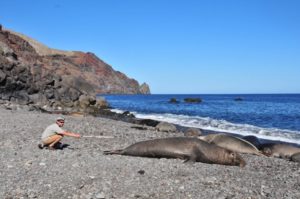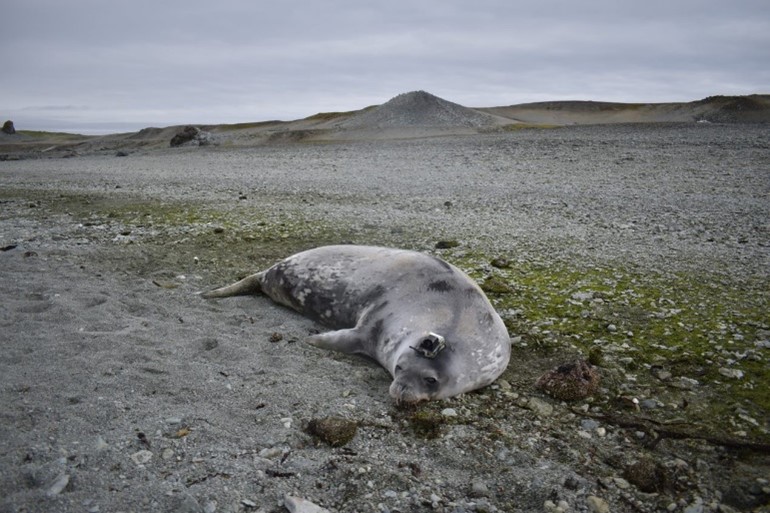Welcome to part 2 of our chat with Dr Luis Huckstadt this #WorldSealDay. Luis is a Senior Lecturer from the University of Exeter, Centre for Ecology and Conservation. Read on to hear about his work on pinnipeds around the world:

Dr Luis Huckstadt, Senior Lecturer at University of Exeter
Talk to us about your work on seals in Cornwall:
I moved to Cornwall about a year ago and I am really interested in trying to understand what is happening with the local population of grey seals. I’ve been working with the Sea Mammal Research Unit at St Andrews and when I moved here, I was asked to join the scientific committee on seals, which is an entity that advises the UK government on everything that has to do with seal populations and management. We had our first meeting this last January up in Scotland and it was an interesting opportunity for me to get familiar with what’s happening on the seal research front in the UK.
In Cornwall there is a lack of studies on local seal populations. We don’t quite have the knowledge of movement patterns of these animals, the foraging behaviours, and that’s a bit worrisome because there is a potential for a lot of interaction with fishers in the south west as the seals go for the same species of commercial interest. Additionally, there is a strange situation here where, from the numbers that we have from the few studies that have been done as a census of seals in the south west, the number of pups that are being born in this area shouldn’t be enough to support the population. We can actually see that the population is stable to increasing. So, there must be immigration from somewhere further north, but we don’t know the magnitude or the genetic fluxes between the populations. So, there is huge potential to study.
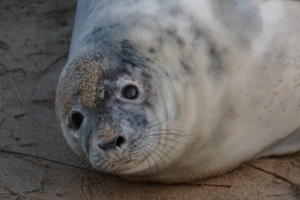
Grey seal, UK. Photo credit: Lauren Storer
I started working with the Cornish Seal Sanctuary on a couple of validation studies with the animals that they have in captivity, to validate the use of drones to estimate the mass and the body condition of the seals. We started early last year, and we are continuing this project working to create a 3D model with lidar technology and flying the drone so we can measure the animal. We have an ultrasound so we can measure the blubber thickness of the animal. Then we can build a model that we can use later on to collect data from the colonies in the wild and apply that model to see how animals are doing along the entirety of the coast. This week in fact we are starting our sampling. We will be going to Godrevy to fly the drones and collect our first set of data. Later on, we will then design a long term study where we are going to be monitoring the changes in the population, the number of pups that are born, and also body condition.

Grey Seal, UK. Photo Credit: Ellen Cuylaerts / Ocean Image Bank
We also have a collaboration with the UK strandings investigation programme. For years they have been collecting data on strandings (animals that have been found ashore dead). We are going to start processing these samples through stable isotopes to try to understand the ecology of the population, but in a historical context. We want to see if we can detect changes in what these animals have been doing, the environment that they have been using and the prey they have been trying to get. We have a PhD student who is going to start next autumn and that is going to be their job, trying to process samples that have been collected over many years to try to understand how we can use the local population of pinnipeds, and cetaceans as well, to tell us something about changes in the ecosystem.
Additionally, we have a collaboration with the Sea Mammal Research Unit where we are processing samples from the Shetland Islands and from Eastern England. The idea here is trying to see whether there is competition between the populations of grey seals and common seals. Grey seals are doing really well all over the UK, some of them might be showing signs of reaching the maximum population size. However, the common seal (harbour seal) are starting to show signs of decline and we don’t understand what is happening there. One of the hypotheses is that there might be competition for resources with grey seals. We’ll address that using stable isotope analysis on samples from animals that the sea mammal research unit have been handling. There are a lot of studies being done, trying to understand if it could be a regime shift, oceanographic conditions, whether it could potentially be predation by orca. This is hopefully the beginning of a long running programme on pinnipeds in the south west of England and work later on that will build up collaborations with local organisations that work with seals. Eventually we would like to form a common front and address the ecology of the species here. As I mentioned earlier, we have a huge gap of information.
What is your favourite species of seal to work with?
It would have to be the Weddell seal in Antarctica. It is one of the most studied species of seal; I think that the longest dataset on population dynamics of any large mammal is on a population of Weddell seals in the Ross Sea in Antarctica. The reason why I like them so much is that they are one of the most mellow and, I hate to use the word cute, but they are really cute animals and they are very curious about anything that comes up to them. The reason for that is that they don’t have any land-based predators, unlike the seals in the Arctic where there’s polar bears. In the Antarctic predators are in the water not on the ice or land. So, they are very naturally curious when hauled out. They don’t have the instinct to run away and when we approach them to do any work, we can sometimes see them rolling on their back and exposing their belly.
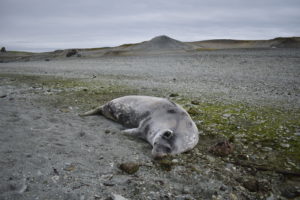
Weddell seal with CTD Tag. Credit: Luis Huckstadt
The other thing I like about them is the sounds that they make. When we are working on the frozen ocean and driving our snow machines, if you kill the engine and wait you can hear the Weddell seals through the ice as they are swimming underneath you. They have the most incredible sounds, almost like spaceships from Star Wars. By far they are my favourite species of seal to work with.
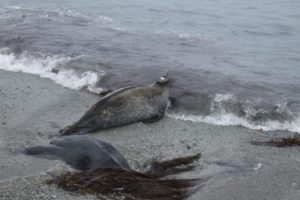
Weddell seal after release. Credit: Luis Huckstadt
It’s also interesting working with sea lions. Sea lions are more aware of the situation so it’s more of a challenge to capture them. Once you capture them once, they know you are coming back as well. You can see how they are related to dogs and bears for example because you can see in their minds that they understand what is happening. True seals tend to be a little bit less aware and a bit less sharp than sea lions.
Working with elephant seals is also an amazing opportunity, just because they are such good divers. They are diving machines and can just spend hours underwater. They’re also really easy to work with. Even though it might look challenging they are really safe for us to work with. Overall, though Weddell seals are my favourite.
